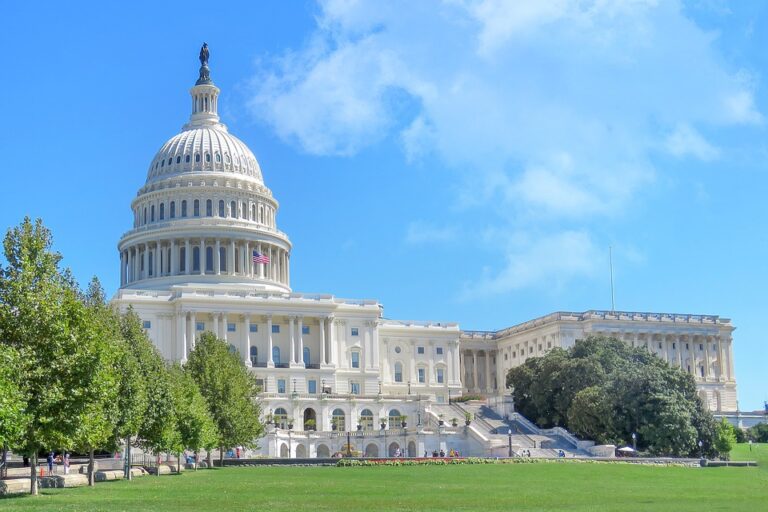Project 2025: A Critical Analysis of its Impact on Congressional Efficiency
In recent years, the call for reform within the United States’ legislative process has grown louder, spurred by increasing partisanship, legislative gridlock, and public disillusionment. Project 2025, an ambitious initiative aimed at overhauling congressional operations, has emerged as a beacon of hope for proponents of good governance. This article explores the core components of Project 2025, its potential to enhance congressional efficiency, and the concerns it raises among various stakeholders.
Core Components of Project 2025
Project 2025 is a comprehensive legislative reform initiative designed to modernize Congress and bolster its efficacy in policymaking. Its key components include:
-
Digitization of Legislative Processes: Transitioning from paper-based to digital systems to streamline documentation, reduce bureaucratic bottlenecks, and improve accessibility of legislative records.
-
Electoral Reform: Introducing measures aimed at reducing gerrymandering, enhancing campaign finance transparency, and encouraging broader voter participation to ensure a more representative Congress.
-
Enhanced Deliberation: Establishing new protocols for committee operations and floor debates to ensure more rigorous and inclusive discussions on policy issues. This includes extended time for deliberation and increased input from experts and stakeholders.
-
Improved Transparency: Mandating real-time disclosure of lobbying activities, financial interests of members, and the legislative influence of special interest groups to promote accountability.
- Partisan Balancing Initiatives: Implementing mechanisms to foster bipartisanship, such as bipartisan committees and cross-party negotiation forums, aiming to reduce legislative stagnation.
Potential Impact on Congressional Efficiency
Streamlined Legislative Procedures
The digitization of legislative processes promises to significantly reduce administrative overhead, expedite communication, and facilitate better tracking of bill progress. By leveraging advanced technologies, Congress can adopt a more agile and responsive approach to lawmaking, akin to modern corporate environments.
Enhanced Representativeness and Accountability
Electoral reform is expected to curtail extremist gerrymandering practices, leading to more competitive elections and representatives who truly reflect their constituents’ interests. This could yield a less polarized legislative body and foster a more collaborative atmosphere. Further, transparency measures will hold members accountable, thereby increasing public trust and compliance with ethical standards.
Richer Legislative Deliberation
By expanding the scope and depth of committee operations and floor debates, Project 2025 aims to ensure that legislation is well-considered and evidence-based. The inclusion of expert opinions and stakeholder views can lead to more nuanced and effective policies, thus mitigating the risks of hasty lawmaking and unintended consequences.
Fostering Bipartisanship
The creation of bipartisan structures within Congress could bridge the divide between major political parties. By encouraging direct dialogue and compromise, these structures could break the persistent cycle of legislative gridlock, allowing for more productive sessions and timely passage of essential laws.
Concerns and Criticisms
Despite its promising features, Project 2025 has not been without its detractors. Critics argue that:
-
Implementation Challenges: Transitioning to a fully digital system involves substantial upfront costs and a steep learning curve for members and staff, potentially causing initial disruptions.
-
Effectiveness of Electoral Reforms: While well-intentioned, electoral reforms may face resistance from entrenched interests that benefit from the status quo. Moreover, the effectiveness of these reforms in eliminating partisanship remains uncertain.
-
Transparency Fatigue: Overemphasis on transparency could lead to information overload, where an inundation of data makes it difficult for the public and watchdogs to discern critical issues from background noise.
- Partisan Skepticism: Efforts to foster bipartisanship might be met with skepticism, particularly if perceived as undermining party principles or electoral mandates. The success of such initiatives depends heavily on the willingness of political leaders to engage in good faith.
Conclusion
Project 2025 represents a bold and visionary step towards revitalizing the United States Congress. By addressing core issues of inefficiency, lack of transparency, and partisanship, it has the potential to create a more dynamic and responsive legislative body. However, the road to successful implementation is fraught with challenges that require careful navigation. The ultimate impact of Project 2025 will hinge on the resolve of policymakers to embrace change, the effectiveness of reforms in practice, and the oversight mechanisms in place to ensure continuous improvement.
As Congress approaches the critical juncture of 2025, the lessons learned from this initiative will undoubtedly shape the future of American governance. Whether Project 2025 succeeds or stumbles, it underscores the enduring necessity of striving for a more effective, accountable, and representative legislative system.
